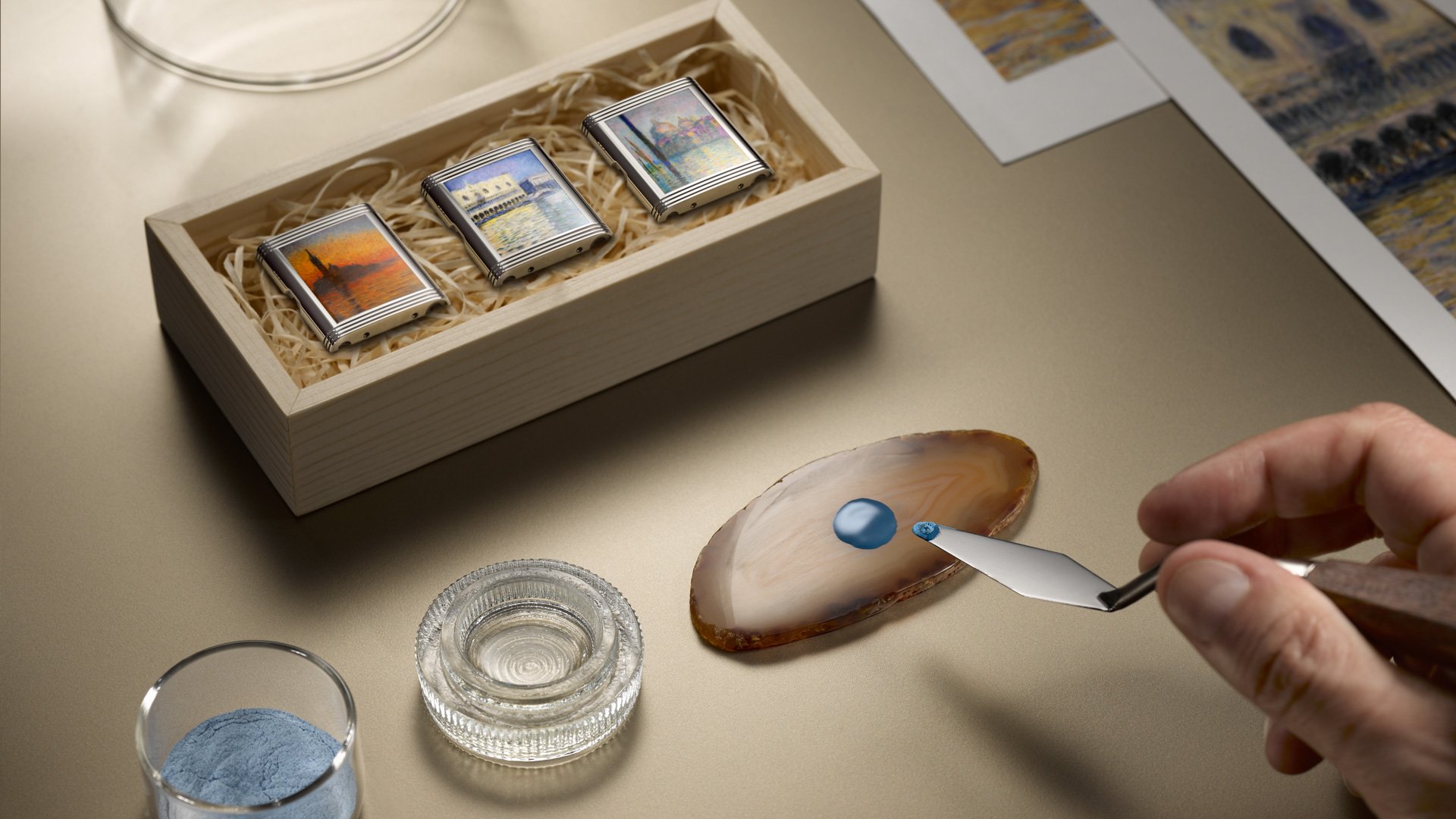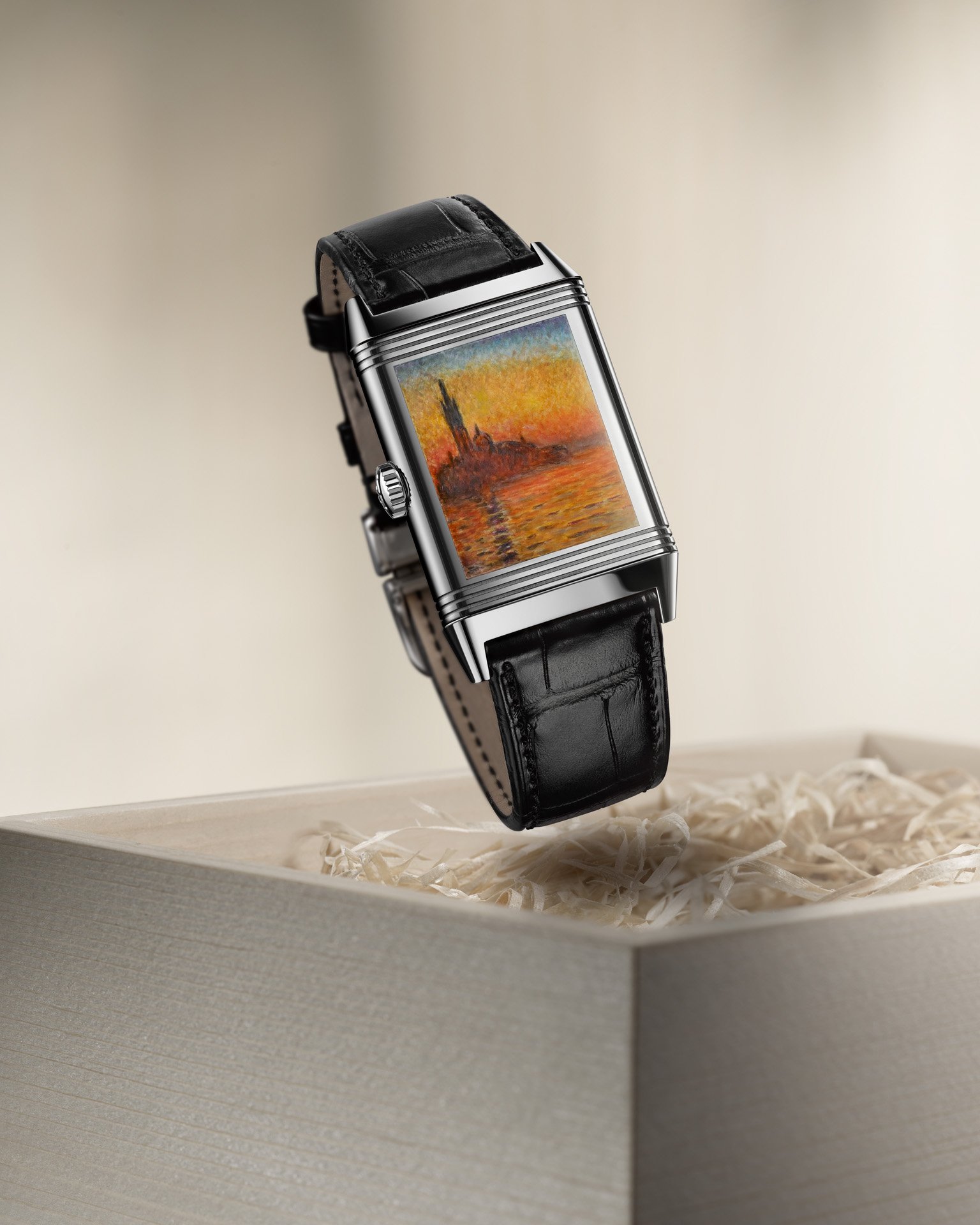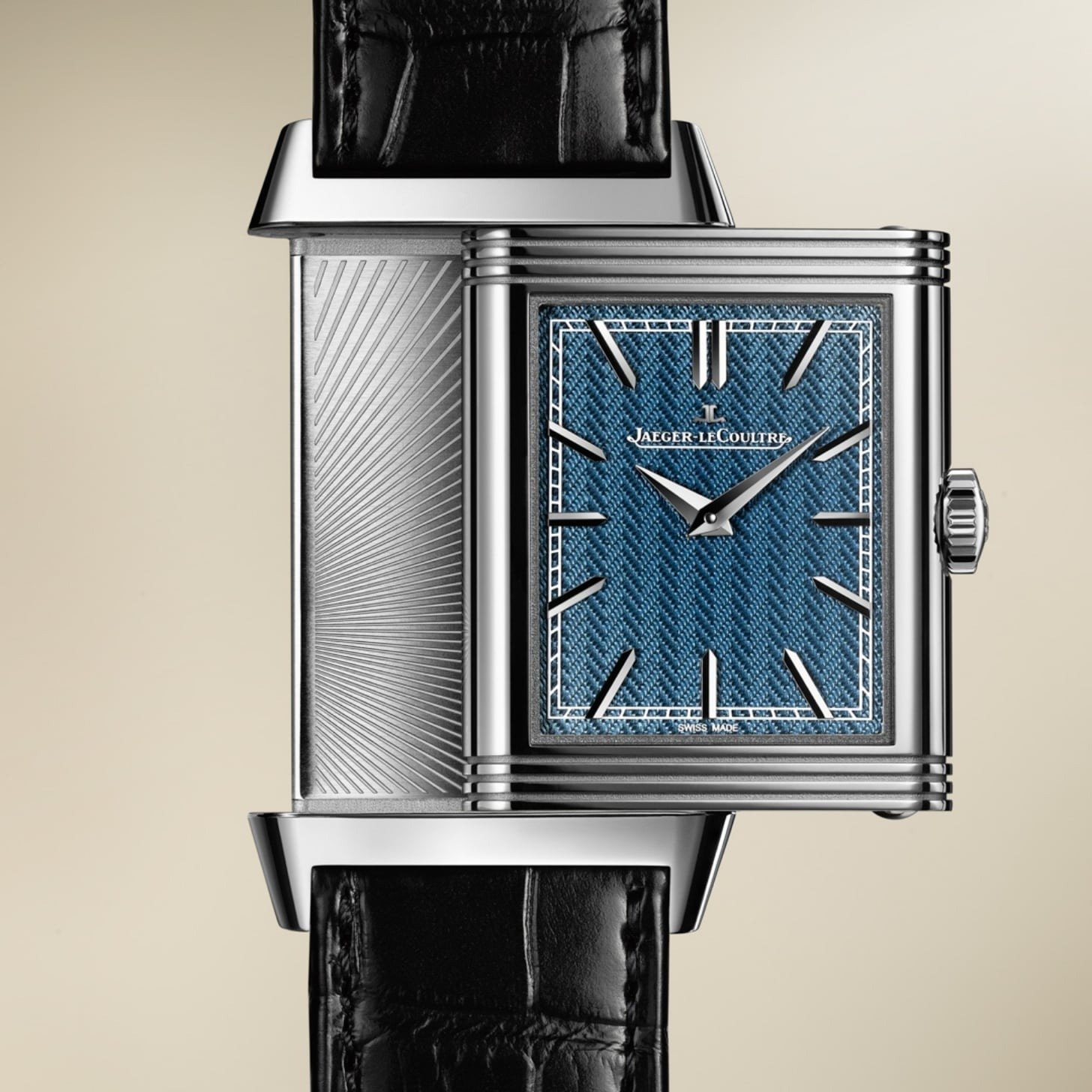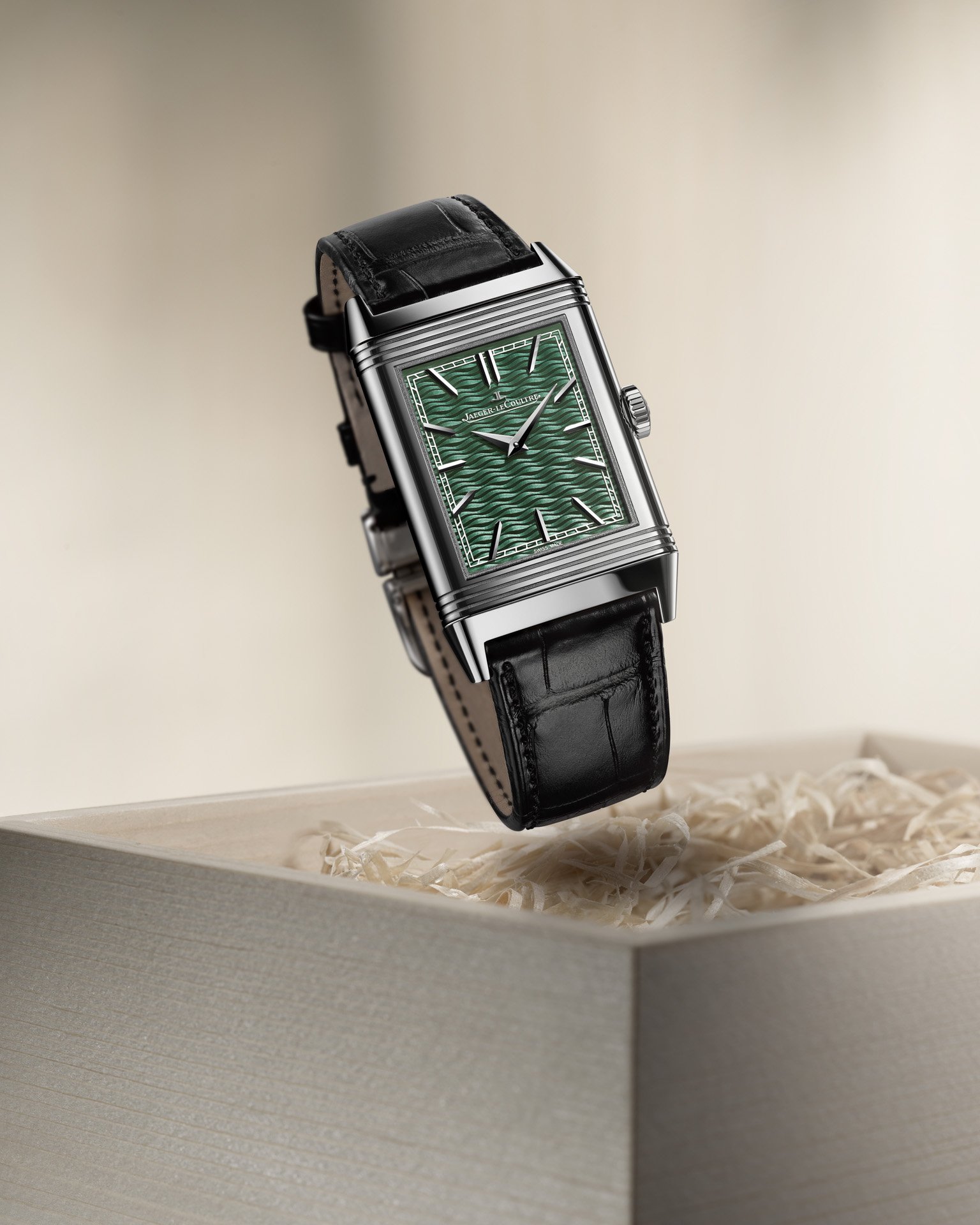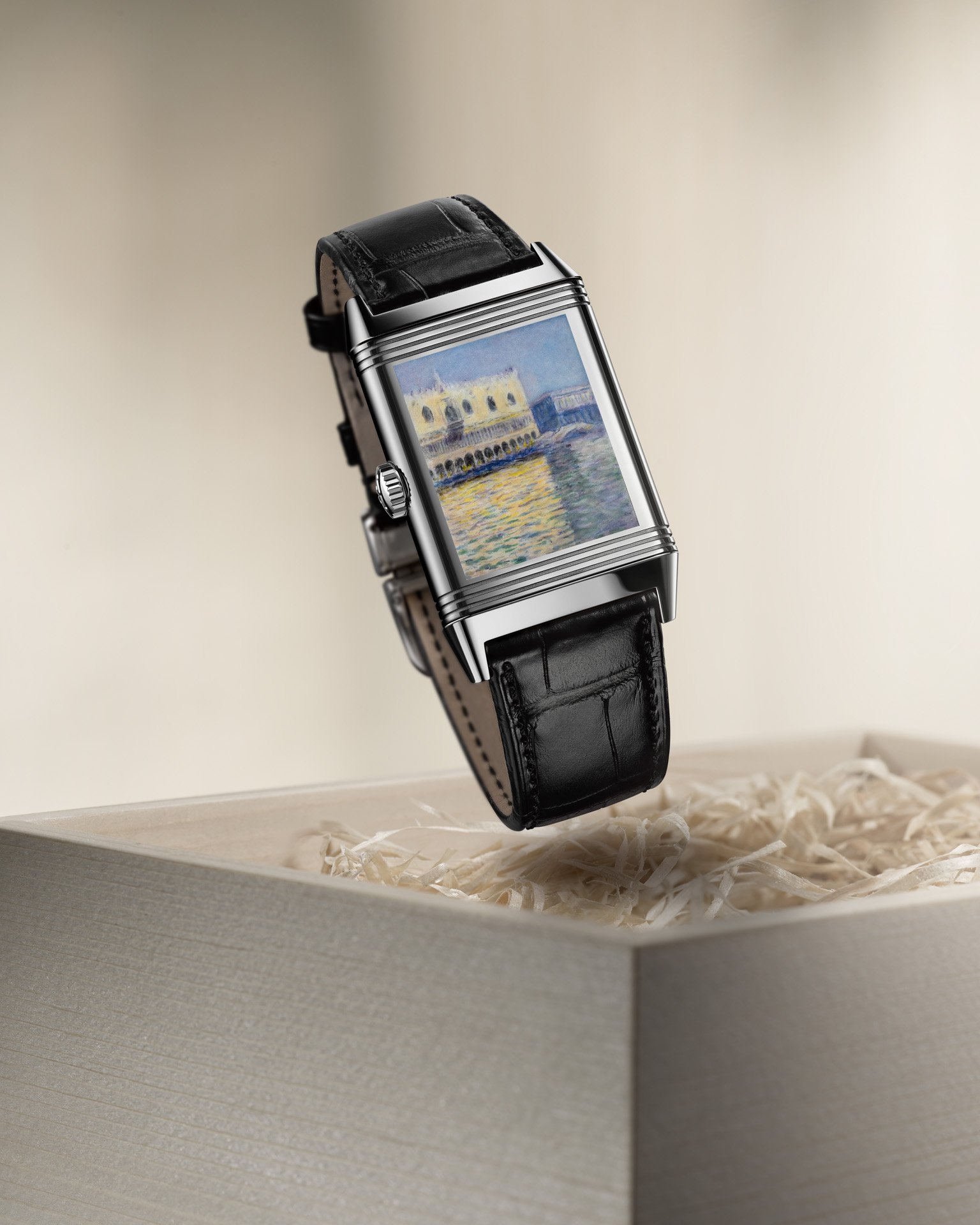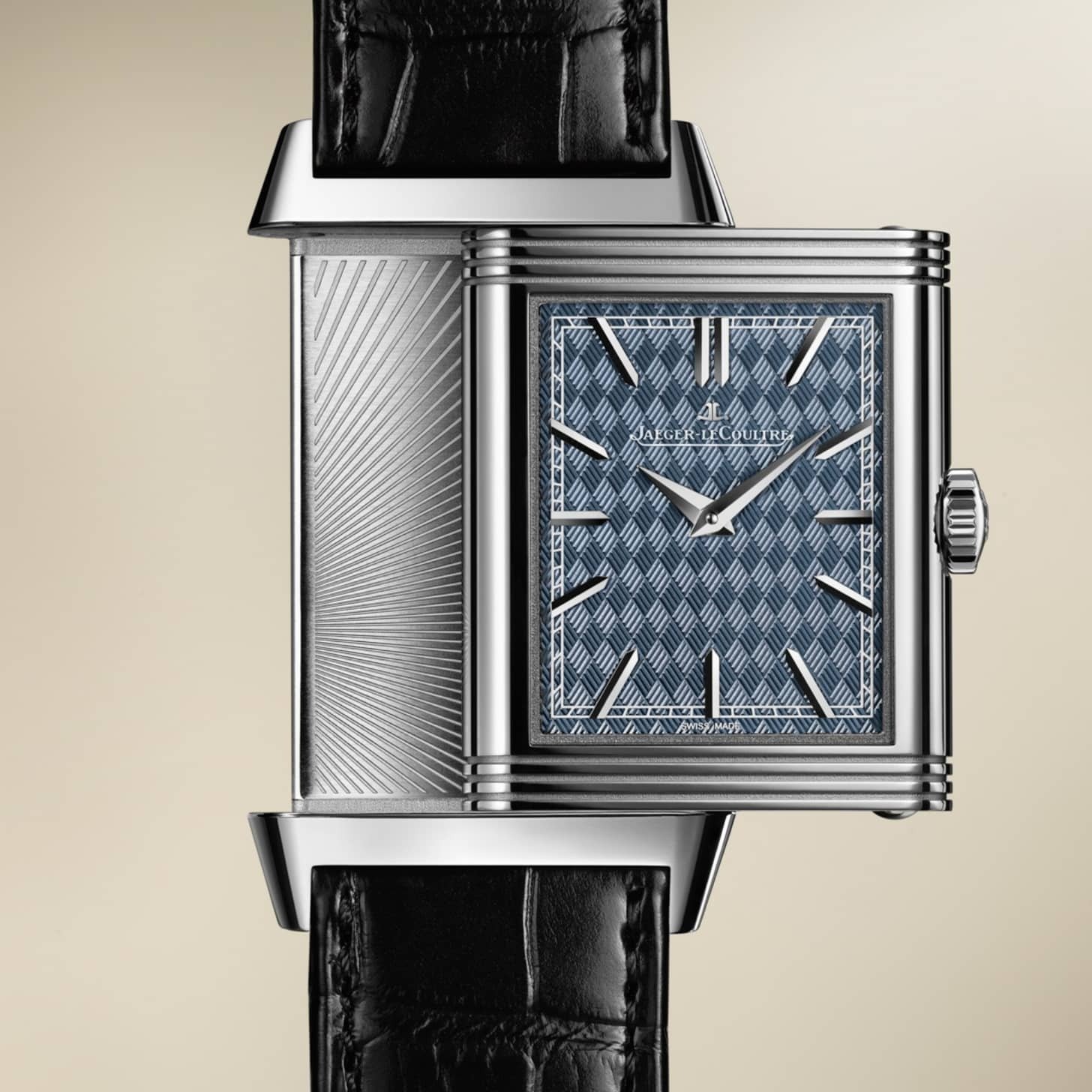The New Jaeger-LeCoultre Reverso Tribute Enamel “Venice Series” — Three Monet-Inspired Watches From The Métiers Rares Atelier
In the 1999 movie The Talented Mr. Ripley, the character Dickie Greenleaf, who takes over Tom Ripley’s life, says, “‘See Venice and die,’ is what they say? Or is it Rome?” Well, Dickie, the city you’re looking for is Naples. But I have to admit I also thought Goethe once wrote that it was Venice. I would offer an alternative by writing, “Or you could buy a watch from the Jaeger-LeCoultre Reverso Tribute Enamel ‘Venice Series’ because they are to die for.” The three new creations from the Métiers Rares atelier have a link to JLC’s participation in the Homo Faber Biennial exhibition in Venice this September. The watches honoring the host city have case backs featuring three of Claude Monet’s 37 impressionist paintings of Venice.
The Reverso has repeatedly proven itself as an ideal canvas for (tiny) artistic expression. This time, the canvas is a 27.4 × 45.6 × 9.73mm case made of 18K white gold. The movement inside these three Reverso models is the manually wound Jaeger-LeCoultre 822. But let’s move on to the more artistic stuff. French impressionist painter Claude Monet (1840–1926) painted 37 works portraying Venice. The artist arrived in the city in the autumn of 1908 and stayed on the Grand Canal, first in the Palazzo Barbaro. After that, he and his wife moved into a hotel nearby. This resulted in, among other paintings, a series of six canvases of the Grand Canal. During Monet’s 10-week stay, he did what he thought was impossible by painting a city “too beautiful to paint.” In the end, he managed to masterfully capture the changing light in many locations throughout Venice.
The picturesque Jaeger-LeCoultre Reverso Tribute Enamel “Venice Series”
The mission of Homo Faber is to honor and promote craft in all of its forms. And that makes Jaeger-LeCoultre a perfect fit. The brand from Le Sentier in the Swiss Vallée de Joux has a strong reputation for fine craftsmanship. JLC’s Métiers Rares atelier has produced some stunning creations featuring miniature reproductions of artistic works. In recent years, for instance, we saw Reverso watches showing Van Gogh and Courbet paintings. And now, to honor the Homo Faber Biennial exhibition in Venice this September, the brand releases the Reverso Tribute Enamel “Venice Series.” The exclusive collection features three of Monet’s paintings depicting the exhibition’s host city. Furthermore, the watches combine miniature painting, enameling, and guilloché crafts.
The Reverso Tribute Enamel Monet “San Giorgio Maggiore” (Q39334M4) shows the painting San Giorgio Maggiore at Dusk in less than 1/40th the size of the original. The island of San Giorgio Maggiore is the setting for the Homo Faber Biennial, and Monet painted it to depict the Sun setting behind the island. In both the large and small versions of the picture, the emphasis is on light, colors, and reflections, not on accurately reproducing the buildings. It took JLC’s artists approximately 70 hours of meticulous labor to reproduce Monet’s work. The painting requires 14 layers to achieve the right depth. The procedure begins with three base layers. After that, four layers of painting, seven layers of translucent fondant, and up to 15 separate firings at up to 800° Celsius follow.
Beauty on the front too
The front of the case shows a blue Grand Feu enamel with an intricate herringbone guilloché motif. Though the dial takes less time to produce than the case back, the process is still nothing to scoff at. Applying the guilloché alone takes eight hours and 360 lathe passes. Then, the application of blue enamel requires up to nine hours, including five layers of enamel and seven firings at 800° Celsius. Finally, JLC must add the minute track and drill holes in the enamel without cracking it to apply the indexes.
The Grand Canal
The case back of the Reverso Tribute Enamel Monet “The Grand Canal” (Q39334M5) depicts an afternoon view across Venice’s Grand Canal. In the picture, the church of Santa Maria della Salute seemingly floats on the water. Reproducing this Monet painting once again required almost 70 hours of enameling work. To get the reflections on the water’s surface depicted in Monet’s painting right, five hours alone were spent on that part of the miniature picture.
Of course, if you want to use the watch to read the time (imagine that!), you can also enjoy its green Grand Feu enamel dial. It displays a wavy guilloché pattern and, like most Reverso Tribute models, high-polished and faceted indexes and dauphine hands.
The Doge’s Palace
“The palace … was just an excuse for painting the atmosphere,” Monet wrote to a friend. He painted it aboard a gondola in the morning. There are no gondolas in Le Sentier, so the enameler worked for almost 70 hours while sitting on a stool in the atelier. Certainly, that is the best place to get the tiny reproduction right.
The geometric pattern of the blue Grand Feu enamel consists of 981 lines, each requiring five lathe passages. With 4,905 passages of the hand-operated lathe in total, it takes a master craftsperson eight hours to complete this process.
Like the other two timepieces in the “Venice Series,” the Reverso Tribute Enamel Monet “The Doge’s Palace” (Q39334M6) is a limited edition of 10 pieces. As you might expect, the prices of all three models are on request. So, what do you think? Are the three watches in the Reverso Tribute Enamel “Venice Series” to die for, as I wrote in the intro?

